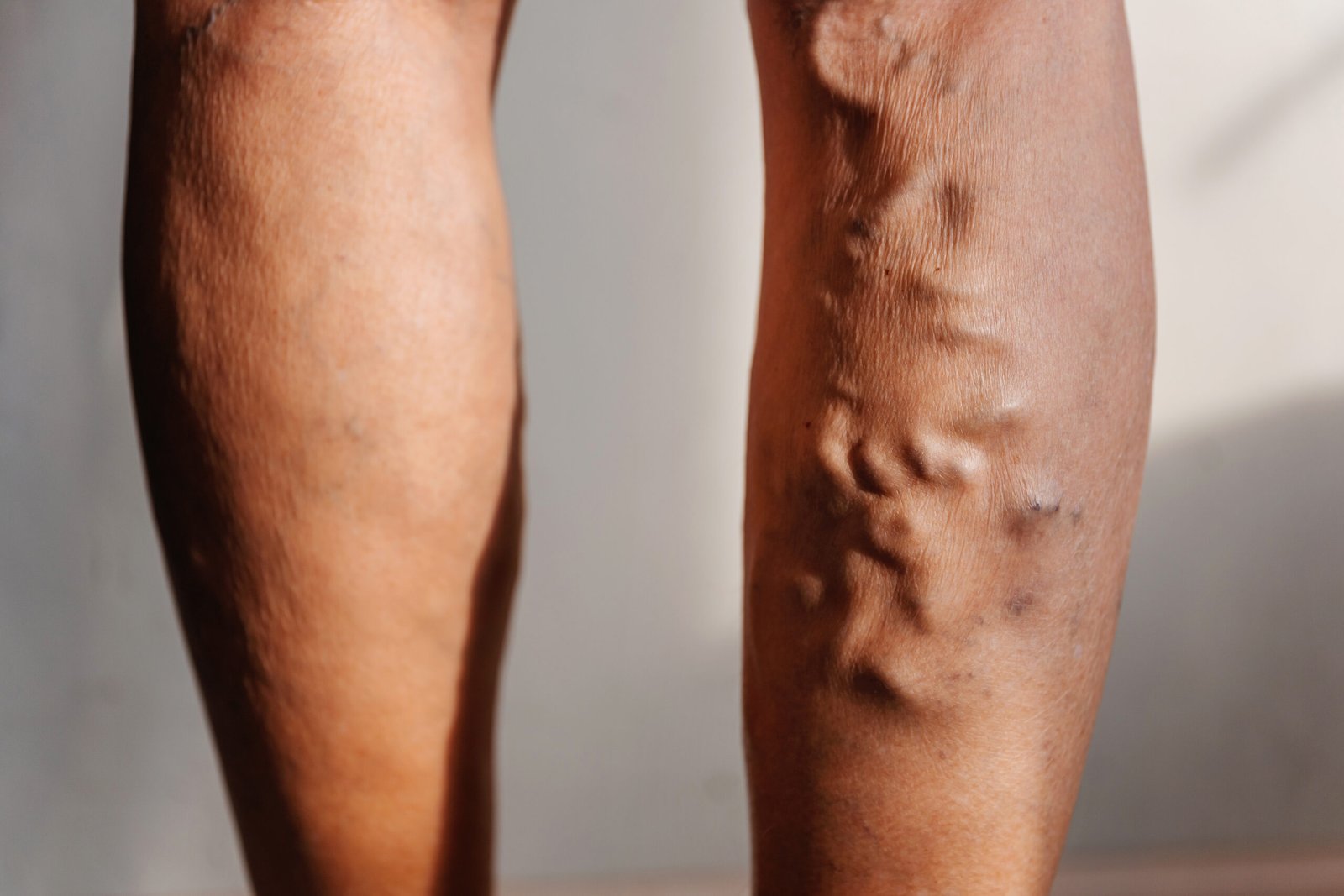
Table of Contents
Many people consider varicose veins a mere cosmetic concern. While they may not always cause immediate health issues, they can indicate deeper vein issues:
Left untreated, varicose veins may lead to skin changes, leg ulcers, superficial vein clots, or even increase your risk of deep vein thrombosis (DVT).
Recognising symptoms early not only allows for less invasive treatment, but it also helps you avoid unnecessary discomfort and long-term health issues.
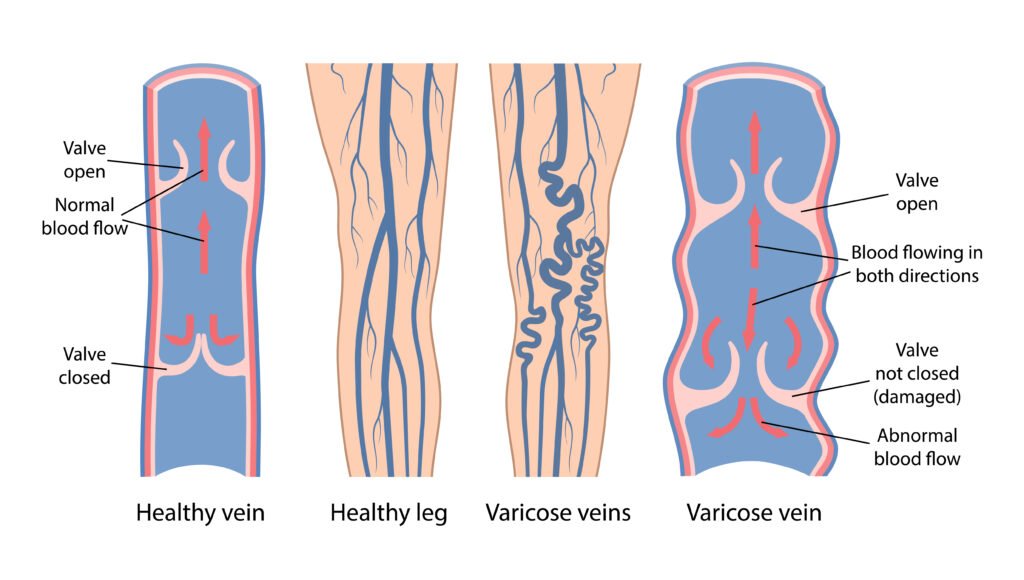
Varicose veins develop when the valves inside your veins stop functioning properly. Normally, these one-way valves prevent blood from flowing backwards as it returns to the heart. When they weaken or fail, blood pools in the vein, causing it to enlarge, bulge and twist.
Varicose veins can cause discomfort, skin discolouration, inflammation or even ulcers.
The following are generic causes of varicose veins:
Early symptoms of varicose veins are often subtle. Many people mistake them for general leg fatigue after a long day or mild muscle cramps from activity. Without visible signs at first, these symptoms are easy to overlook—until the condition becomes more noticeable or uncomfortable.
Spot these signs before they worsen:
Note: These symptoms may appear even before any visible bulging of the veins. If you experience persistent discomfort or fall into a higher-risk group, it’s best to consult a vascular specialist to prevent further complications.
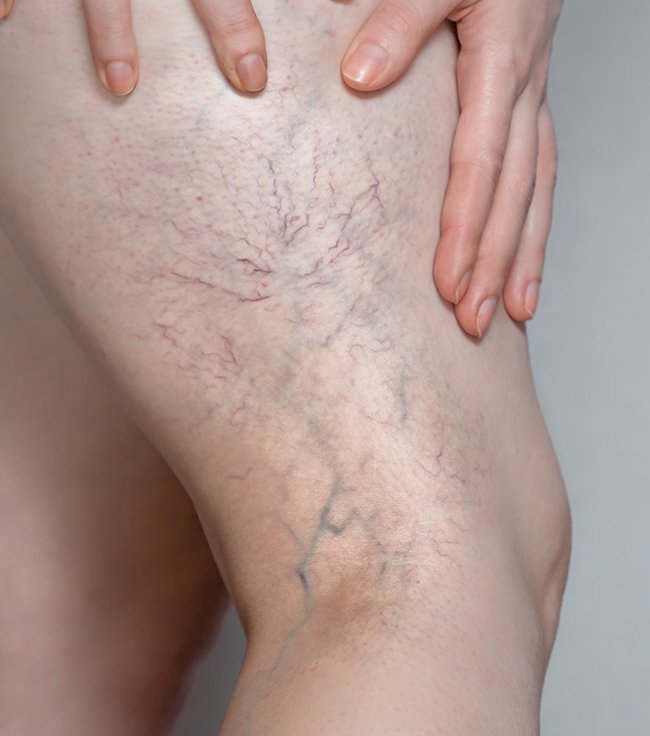

Early symptoms of varicose veins are often subtle. Many people mistake them for general leg fatigue after a long day or mild muscle cramps from activity. Without visible signs at first, these symptoms are easy to overlook—until the condition becomes more noticeable or uncomfortable.
Spot these signs before they worsen:
Note: These symptoms may appear even before any visible bulging of the veins. If you experience persistent discomfort or fall into a higher-risk group, it’s best to consult a vascular specialist to prevent further complications.
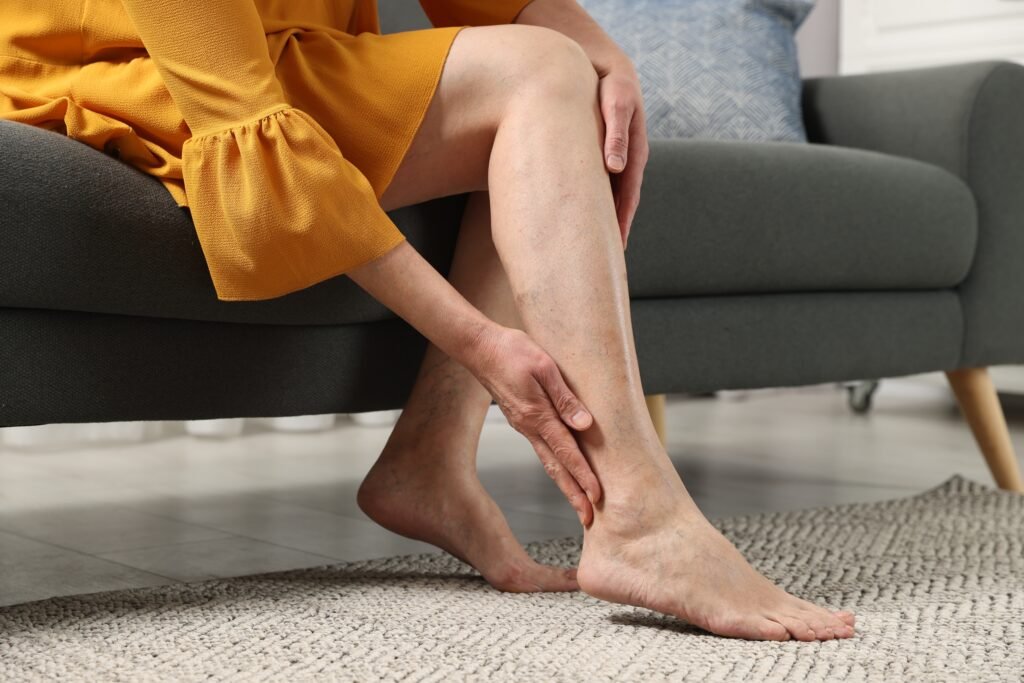
Varicose veins can affect anyone, but certain factors make you more likely to develop them.
These include:

Varicose veins can affect anyone, but certain factors make you more likely to develop them.
These include:
In addition to the risk factors mentioned above, certain lifestyle habits can contribute to the worsening of varicose veins if you already have them. These include smoking, frequent use of high heels, regularly crossing your legs when sitting and prolonged exposure to heat, such as from saunas.
To relieve discomfort from varicose veins, consider simple measures like elevating your legs for 15 minutes a few times a day, doing light exercise to encourage circulation and applying a cold compress to reduce swelling. Wearing compression stockings may also provide support and help improve blood flow.
Avoid aggressively massaging varicose veins as doing so can worsen inflammation.
Being upright for extended periods increases venous pressure in the lower limbs. This constant pressure can stretch the vein walls and weaken the one-way valves over time, allowing blood to flow backwards and pool in the veins.
Leg veins handle a significant volume of blood, especially when standing or moving. When combined with weakened or faulty valves, this increased load contributes to blood pooling and the development of varicose veins.
Leg veins rely on calf muscle contractions to push blood back to the heart. When activity is reduced due to prolonged sitting, inactivity or weak muscles, the pump becomes less effective. Blood flow slows, pressure builds and veins begin to enlarge.
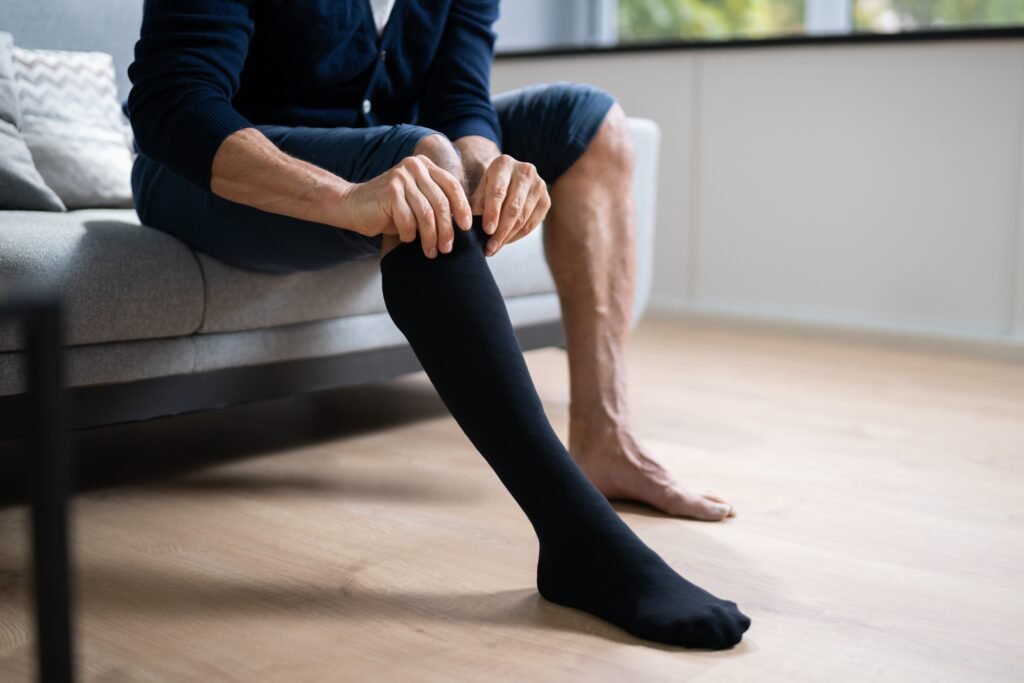
While mild varicose veins may not cause serious problems at first, they are a sign of underlying vein dysfunction and ignoring them can lead to more than just discomfort:
Over time, untreated varicose veins can result in complications such as chronic leg swelling, venous eczema, bleeding from ruptured veins, superficial thrombophlebitis or even venous ulcers that are slow to heal.
Beyond the physical risks, varicose veins can affect your quality of life. Many patients report heaviness, aching, throbbing or itching, especially after long periods of standing or at the end of the day. This discomfort often worsens with time if not properly managed.
The good news is that treatment is most effective and less invasive when done early:
Addressing varicose veins promptly not only helps prevent complications but also improves daily comfort and leg appearance. Options range from lifestyle adjustments and compression therapy to minimally invasive procedures that restore proper blood flow and relieve symptoms.
If you’re living with varicose veins, it’s worth getting a proper assessment to understand your condition and explore your treatment options.
At Spectrum Vascular & General Surgery, several treatment options are available depending on your condition. They include:
A non-invasive, first-line management option that helps relieve symptoms such as heaviness, aching, swelling and throbbing. Compression stockings improve venous return, reduce blood pooling and lower the risk of deep vein thrombosis (DVT). While they don’t eliminate existing varicose veins, they are effective in reducing daily discomfort.
A minimally invasive procedure that uses a catheter to deliver a small amount of
medical-grade adhesive into the affected vein, sealing it shut.
This redirects blood flow to healthier veins and relieves symptoms without the need for heat or tumescent anaesthesia.
This procedure uses radiofrequency energy to heat and seal the diseased vein from within.
It is minimally invasive, performed under local anaesthesia and typically results in rapid symptom relief and recovery.
Ideal for smaller varicose or spider veins. A sclerosant solution is injected directly into the vein, causing it to collapse and gradually
fade from view.
It is commonly done in an outpatient setting with no downtime.
Also known as stab avulsion, this technique involves removing larger or bulging veins through tiny skin incisions using specialised
hooks.
It is often combined with other treatments and leaves minimal scarring.
When appropriate, surgical procedures can be performed laparoscopically (keyhole surgery), allowing for less pain, faster recovery and a shorter hospital stay.
Early intervention often means less invasive procedures are needed, leading to better outcomes and quicker return to daily activities.
If you notice signs of varicose veins, managing them early can make all the difference. Prompt treatment helps prevent complications, relieve daily discomfort and reduce the need for more invasive procedures.
Contact us today and take your first step towards optimal vascular health.
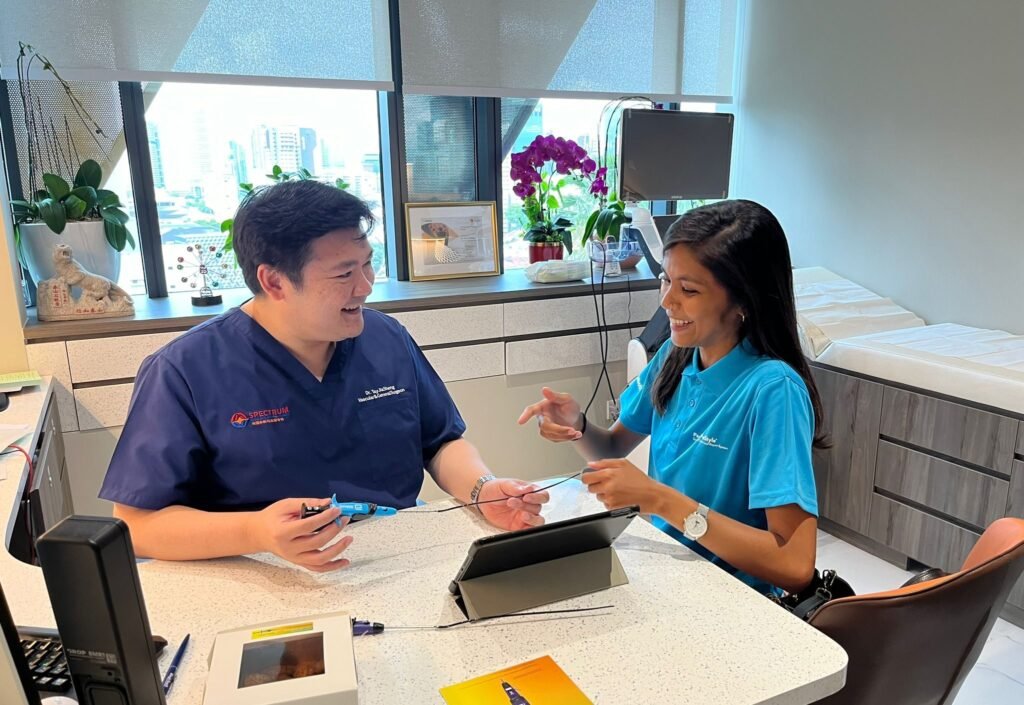
Dr Tay Jia Sheng is a distinguished vascular surgeon in Singapore, specialising in minimally invasive vascular, endovascular and endovenous procedures. He treats a broad range of conditions including varicose veins, deep vein thrombosis, peripheral arterial disease, diabetic foot ulcers and aortic aneurysms.
As a founding vascular surgeon at Sengkang General Hospital, Dr Tay led one of Singapore’s busiest vascular units with strong outcomes and low complication rates. He is among the few local surgeons skilled in advanced techniques such as minimally invasive vein harvesting and complex endovascular aneurysm repairs.
Outside the operating theatre, he has taught at Yong Loo Lin, Duke-NUS and Lee Kong Chian medical schools. Recognised with awards such as the SingHealth Quality Service Award and COVID-19 Resilience Medal, he now practises at Spectrum Vascular & General Surgery, offering patient-centred care with a focus on minimally invasive treatment.

Dr Tay Jia Sheng is a distinguished vascular surgeon in Singapore, specialising in minimally invasive vascular, endovascular and endovenous procedures. He treats a broad range of conditions including varicose veins, deep vein thrombosis, peripheral arterial disease, diabetic foot ulcers and aortic aneurysms.
As a founding vascular surgeon at Sengkang General Hospital, Dr Tay led one of Singapore’s busiest vascular units with strong outcomes and low complication rates. He is among the few local surgeons skilled in advanced techniques such as minimally invasive vein harvesting and complex endovascular aneurysm repairs.
Outside the operating theatre, he has taught at Yong Loo Lin, Duke-NUS and Lee Kong Chian medical schools. Recognised with awards such as the SingHealth Quality Service Award and COVID-19 Resilience Medal, he now practises at Spectrum Vascular & General Surgery, offering patient-centred care with a focus on minimally invasive treatment.
References:
38 Irrawaddy Road
#10-33
Singapore 329563
Tel: +65 6041 0933
1 Farrer Park Station Road
#08-14 Connexion
Singapore 217562
Tel: +65 6974 8859
HP: +65 8874 0371 (24 hours)
Email: contact@spectrum-surgery.com
© 2025 Spectrum Vascular & General Surgery